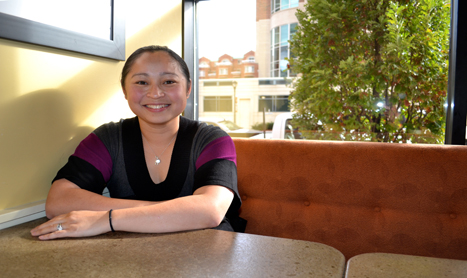ANNAPOLIS – Thu Nguyem immigrated to Florida from Vietnam with her family nearly 30 years ago.
Every month, her family would drive three and a half hours to Tampa to stock up on Vietnamese food at the one Asian market they knew of in the state.
Nguyem, 32, now lives in Montgomery County within walking distance of three Asian markets and is part of an expanding Asian population in Maryland.
With a smaller fraction of Hispanic immigrants and a larger portion of Asian immigrants, Maryland offers a different picture of immigrant life, one in which immigrants are more educated, more prosperous and more likely to be documented, diverging from some stereotypes around the country.
Nationally, more than half of all immigrants are from Latin America and about 28 percent are from Asia, according to 2010 Census data. But the proportion of Hispanic to Asian immigrants in Maryland is much closer than in other states, with about 40 percent from Latin America and 33 percent from Asia.
Maryland has the 12th largest immigrant population in the nation, with nearly 14 percent of residents foreign-born, according to the Federation for American Immigration Reform.
The difference in median income between Maryland’s immigrants and natives is also smaller than most states and the nation.
Foreign-born Maryland residents earn about $4,000 less than natives, while nationally the gap is $6,000, according to the Center for Immigration Studies’ analysis of Census data.
In New York, which has the second highest immigrant population in the nation, the gap is close to $11,000. In Arizona, with the 11th highest immigrant population, the gap is nearly $20,000.
Besides Virginia, Maryland has the highest proportion of immigrant adults aged 25 to 65 with college degrees in the nation – about 41 percent.
“In Maryland, immigrants are just as likely to have a college degree or more as the natives,” said Steven Camarota, research director at the Center for Immigration Studies.
This week, Maryland voters approved a law that would extend in-state tuition to some illegal immigrants, with 58 percent of voters in favor.
Nguyem’s parents found success in America mostly because her father was educated and already spoke English, Nguyem said. As the oldest child, he held the highest degree from Saigon University and came to the U.S. as a master electrician, opening his own electrical engineering business.
Her mother immigrated with little education but earned her GED and became a production manager, making ballroom dance gowns, she said.
Nguyem herself attended Wellesley College in Massachusetts, a high-ranking, private school, and afterwards became a teacher.
Nationally, only 6 percent of Mexican immigrants hold a college degree, according to Census data, while more than half of immigrants from China – Maryland’s second largest immigrant population behind El Salvador – have a college degree.
Maryland’s distance from the Mexican border and the nature of its economy, which relies heavily on high-paying federal jobs that require higher educations, result in fewer Hispanic immigrants and more Asian immigrants, who are better educated, more likely to be legal and overall better off, Camarota said.
From 2004 to 2009, 82 percent of immigrants from Mexico were illegal, said Andres Villarreal, associate sociology professor at the University of Texas, at a seminar on Mexican immigration last month.
On the other hand, only 9 percent of East Asian immigrants, those from China, Hong Kong and Taiwan, are illegal, Camarota said.

